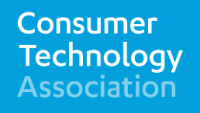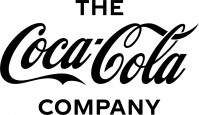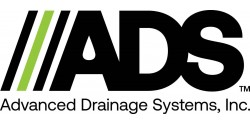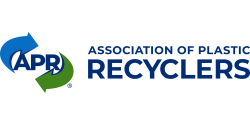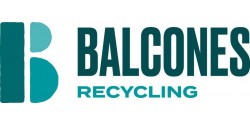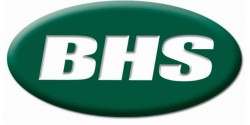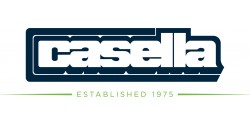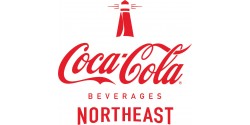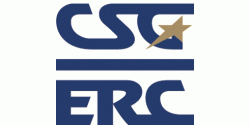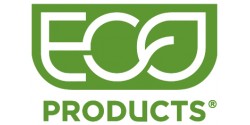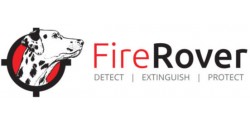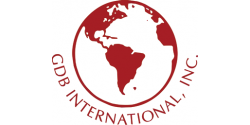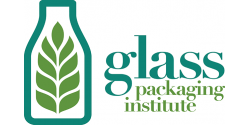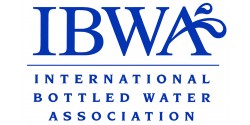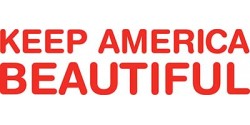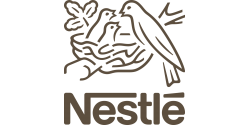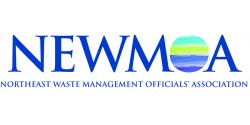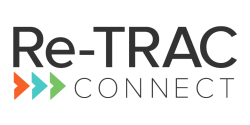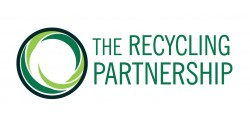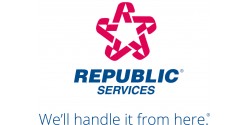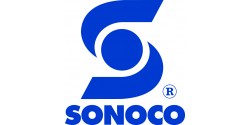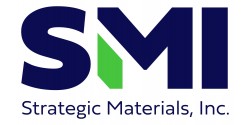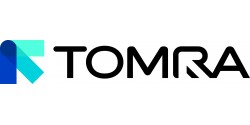January 2016
MEMBERSHIP ACTIVITY
Renewing Distinguished Benefactor
Renewing Sustaining Member
New Supporting Member
Renewing Supporting Member
NERC Recognizes CTA's Committment to the Environment
Member Spotlight - International Bottled Water Association
NERC NEWS
- NERC’s Spring 2016 Conference in the Works for Mid-April
- NERC to Hold Second Webinar in Series about Reuse - January 6
- What's All the Fuss about CRT Glass? - Webinar January 12
- Toy Swap for the Holidays
- Wanted: Wasted Food Reduction, Recovery, & Composting Success Stories
- NERC Assisting with Planning ReuseConex 2016
- NERC Blog Worth Repeating – The Takeaway – Potential Solutions to Recycling Woes
RECENTLY POSTED
- New Environmentally Preferable Purchasing (EPP) Resource Available
- Board of Directors Meeting Minutes - November 2015
STATE UPDATES
MASSACHUSETTS
PENNSYLVANIA
ADVISORY MEMBER NEWS
- In Step with Tech Evolution, CEA is now the “Consumer Technology Association”
- e-cycleNYC Residential E-Waste Recycling Program Expands to Service all New Yorkers
- swissRTec Delamination & Separation Equipment Now Used by ARN
-
Register Today for ISRI2016 - The Recycling Event of the Year
NERC’s mission is to promote sustainable materials management by supporting traditional and innovative solid waste best practices, focusing on waste prevention, toxics reduction, reuse, recycling and organics recovery.
State and Advisory Member Updates, as well articles of General Interest and guest blogs are provided as submissions to NERC and may not reflect the policy or position of the Northeast Recycling Council, Inc.
NERC is an equal opportunity provider and employer.
MEMBERSHIP ACTIVITY
Membership is key to NERC's regional and national committment to sustainable materials management. We are delighted to welcome CTA (formerly CEA) as a renewing Distinguished Benefactor, as well as to thank renewing Sustaining Members the Association of Plastic Recyclers (APR) and Dart, as well as renewing Supporting Member Centre County Recycling & Refuse Authority. We also welcome our newest Supporting Member - MSW Consultants. Thank you!
To see a complete listing of NERC's Members and Supporters, as well as the benefits of membership, visit the NERC Advisory Membership web page.
The broad spectrum of interests represented by NERC's Advisory Members, Individual Supporters, and Board Members and their willingness to participate significantly contribute to the unique and important role that NERC plays in recycling in the region.
For more information, contact Lynn Rubinstein, Executive Director.
NERC Recognizes CTA's Committment to the Environment
Recently, NER C Executive Director Lynn Rubinstein had the opportunity to present Walter Alcorn, Vice President of Environmental Affairs, Consumer Technology Association (CTA) with an award honoring CTA's ongoing support of NERC and its national leadership in supporting electronics environmental sustainability.
C Executive Director Lynn Rubinstein had the opportunity to present Walter Alcorn, Vice President of Environmental Affairs, Consumer Technology Association (CTA) with an award honoring CTA's ongoing support of NERC and its national leadership in supporting electronics environmental sustainability.
CTA has been a Distinguished Benefactor of NERC for 5 years, as well as an active member of the Electronics Recycling Coordination Clearinghouse (ERCC), and sponsored the State Electronics Challenge for 4 years. Truly, a great friend to NERC.
Member Spotlight - International Bottled Water Association
The International Bottled Water Association (IBWA) prides itself on being the go-to 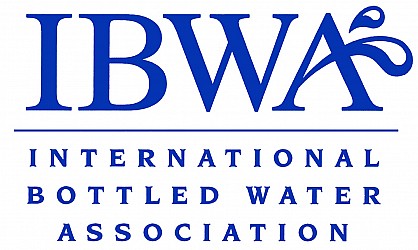 source of information for all types of bottled waters. Founded in 1958, IBWA's member companies include U.S. and international bottlers, distributors, and suppliers.
source of information for all types of bottled waters. Founded in 1958, IBWA's member companies include U.S. and international bottlers, distributors, and suppliers.
Humans have been putting water in vessels since the beginning of civilization. In 1622, the monks at Great Malvern Priory bottled water from the Holywell Spring in the Malvern Hills (UK) for local distribution. The famous Jacob Schweppe, who patented his process of creating mineral water in 1783, commercialized the Malvern Water in 1843, bottling the prized water and sending it throughout England.
Natural spring water (“spas”) was all the rage during the 17th and 18th centuries for its reported therapeutic and healing properties. Some of the earliest bottled water in America was from the waters of Jackson’s Spa in Boston, where bottling began in 1767. Carbonated water grew in popularity in the 1800s. Advances in technology and manufacturing of glass bottles during the 1800s led to larger scale production of bottled water. Moreover, bottled water was often viewed as a safer and cleaner alternative to municipal water supplies. While chlorination of water helped to clean-up the nation’s municipal drinking water, bottled water continued to grow in popularity around the world as Perrier and other specialty water companies entered the market.
Bottled water packaging was revolutionized with the commercial introduction of high density polyethylene in the 1960s. The patenting of polyethylene terephthalate (PET) bottles in 1973 brought to market the first plastic bottle to be able to withstand the pressure of carbonated liquids. PET plastic, with its lightweight and breakage resistance characteristics, eventually rose to replace glass as the preferred material for single-serving bottled water.
Today in the U.S., bottled water is the second largest commercial beverage consumed. Its consumption is about half that of carbonated soft drinks and slightly ahead of the consumption of milk and beer.
Unifying the Industry
Working to unite the bottled water industry, IBWA promotes its member’s commitment to the safety and availability of bottled water worldwide. IBWA’s 640 members are diverse; some are large, internationally known companies, while 60% of IBWAs members are small, locally owned businesses.
To achieve its goals and best represent its members and the bottled water industry, IBWA established a system of committees to develop objectives and execute successful programs. These committees include: Communications, Education, Environmental Sustainability, Government Relations, Membership, State and Regional Associations, Supplier and Convention, and Technical.
Safety and Environment
IBWA champions bottled water as an important choice for healthy hydration and lifestyle, and promotes an environmentally responsible and sustainable industry.
IBWA works with the U.S. Food and Drug Administration (FDA), which regulates bottled water as a packaged food product, to set comprehensive and stringent standards for safe, high-quality bottled water products. All IBWA bottler members must comply with FDA and state regulations, as well as meet the IBWA Bottled Water Code of Practice standards. IBWA’s Code of Practice mandates additional standards and practices that in some cases are more stringent than federal and state regulations and which are verified by annual plant inspections conducted by an independent, third-party organization.
IBWA is an active supporter of Drink Up, an initiative of First Lady Michelle Obama and the Partnership for a Healthier America (PHA). The campaign promotes water as the healthy beverage choice and encourages Americans to drink more water more often – whether from the tap, a filter, or in a bottle.
Source Reduction & Recycling
By lightweighting its packaging, the bottled water industry has reduced the amount of plastic used to make bottled water containers. Between 2000 and 2014, the average weight of a 16.9-ounce PET (half-liter) plastic bottle has dropped 48%. IBWA and the bottled water industry are working on innovative ways to improve recycling, including expanding the use of recycled PET (rPET). According to IBWA, many bottled water companies already use up to 50% recycled material in their plastic bottles.
At 37%, the recycling rate for single-serve PET plastic bottled water containers has doubled in the past nine years. And, 3 and 5 gallon plastic bottled containers are typically reused between 30-50 times before being recycled.
The bottled water industry supports strong community recycling initiatives. IBWA developed its Material Recovery Program (MRP), a collaborative joint venture between businesses and government to improve recycling and waste education and collection efforts for all packaged goods.
Why NERC
States Claire Crane, IBWA’s Program Coordinator for Education, Science, and Technical Relations, “by partnering with organizations like NERC and becoming an Advisory Member, IBWA is able to expand upon its recycling and source reduction efforts while developing new and important affiliations.”
NERC NEWS
NERC’s Spring 2016 Conference in the Works for Mid-April
The process of planning NERC’s next Conference has begun! We don’t have all the answers yet, but wanted to be sure to keep you updated. NERC’s Spring 2016 Conference will be held in Princeton, New Jersey in mid-April. We’ll let you know the exact dates once we finalize the arrangements with the hotel.
We’re also working on the agenda and will be able to give you more details about the sessions, times, and speakers as they become available. Our goal is to post the preliminary agenda and open the registration in mid-January. An announcement will be emailed to you when the agenda and registration are available.
NERC has had the privilege of working with volunteers from the Board and Advisory Members to help plan the event agenda. The Spring Conference Agenda Planning Committee includes: Rick Watson of the Delaware Solid Waste Authority and NERC Board President; Guy Watson of the New Jersey Department of Environmental Protection and NERC Board Vice-President; Chip Foley, NERC Ex Officio Board Member; Chaz Miller of NWRA & NERC Ex Officio Board Member; Christine Cassidy of DART & NERC Advisory Member; Marie Kruzan of the Association of New Jersey Recyclers and NERC Advisory Member; Gunther Wellenstein of the City of Lowell (MA) and NERC Advisory Member; Joanne Shafer of Centre County Recycling & Refuse Authority (PA) and NERC Advisory Member; and Mary Ann Remolador, NERC staff.
If you would like to discuss NERC’s Spring Conference, contact Mary Ann Remolador, NERC’s Assistant Director and Event Organizer.
NERC to Hold Second Webinar in Series about Reuse - January 6
NERC invites you to join us on January 6th (1:30 – 3:00 EDT) for the webinar—States Charging Ahead with Textiles Recovery. The webinar will focus on the statewide textile reuse and recycling programs being spearheaded by the Massachusetts Department of Environmental Protection, NYSAR3 (New York State Association for Reduction, Reuse and Recycling) and the Rhode Island Resource Recovery Corporation; as well as the participation of SMART (Secondary Materials and Recycled Textiles Association) and the Council for Textile Recycling in each of the programs.
The following speakers will be featured on the webinar:
- Brooke Nash of the Massachusetts Department of Environmental Protection
- Dan Rain of the Town of Bethlehem (New York) and Melissa Young of NYSAR3
- Jackie King of SMART
- Sarah Reeves of the Rhode Island Resource Recovery Corporation
Details about the approaches being used to implement, manage, promote, and measure impacts of each program will be presented. The program administrators will also share practical tips and strategies used for making the programs work in their states. And audience participation will be encouraged to create a robust dialogue.
The textiles webinar is the second in NERC’s reuse series and is part of a USDA Rural Utilities Solid Waste Management Grant funded reuse project. For more information about the webinar, contact Mary Ann Remolador, NERC’s Assistant Director.
What’s the Fuss about CRT Glass? Webinar - January 12
You may have read and heard stories in the past several months about stockpiles of CRT glass and abandonment of the material by recyclers. But, what’s going on and why? And, what should you be thinking about when you send your electronics for recycling?
A distinguished panel of experts will explain what’s going on and why, and address the important topic of “what can we do”.
Panelists will include:
- Eric Harris, Associate Counsel/Director of Government & International Affairs, Institute of Scrap Recycling Industries (ISRI), will speak to the international dynamics of CRT markets.
- Jason Linnell, Executive Director, National Center for Electronics Recycling & co-program manager of the Electronics Recycling Coordination Clearinghouse, will speak about the challenges facing recyclers in the U.S.
- Jim Levine, CEO, Regency Technologies, will inform us from the perspective of a recycler dealing with CRT glass on a daily basis.
The moderator will be Lynn Rubinstein, Executive Director of the Northeast Recycling Council, and co-program manager of the Electronics Recycling Coordination Clearinghouse and the State Electronics Challenge, as well as a Board member of SERI.
Toy Swap for the Holidays
A Toy Swap is a wonderful event providing an opportunity for people to donate and/or receive clean, gently used, toys, games, and working sports equipment. Jefferson County, New York hosted its Second Annual Holiday Toy Swap on Saturday, December 12 at Carthage Central High School in Carthage. NERC worked with students and staff from the high school, along with a representative from the Development Authority of the North Country in New York State to hold the “Holiday Toy Swap.”
Children’s winter clothing, including boots, snow suits, and coats were also accepted at the event.
“Donors” were asked to drop-off items for the toy swap at Carthage Central High School, the Thursday and Friday prior to the event and on Saturday from 8-9 am before the start of the event. Toy donors received first choice of the merchandise from 9 am-10 am on Saturday. The doors were open to the public from 10 am until noon. People could shop at the toy swap without having made a donation of toys. In the spirit of reuse, shoppers were asked to bring a reusable bag to collect their items.
An estimated 500 or more toys were donated, from stuffed animals and toy cars, to action figures and dolls. A large number of baby and preschool items were received, as well as books for children of all ages. Building toys, games, puzzles, and even electronic/battery operated toys were donated.
At least ten Carthage students/staff volunteered their time to accept donations, clean items, set-up the event, and oversee the swap. More than 20 families participated as donors, “shoppers” or both. The toy swap was deemed a success by organizers and participants. As the event was hosted at a new location, the new volunteer organizers are looking forward to growing the event in future years.
Grateful shoppers scooped up most of the toys, with the remaining items donated to the Impossible Dream Mission Store in Watertown. New, packaged toys were donated to the Toys for Tots program.
A series of webinars on reuse are being offered by NERC. The next one—States Charging Ahead with Textiles Recovery—is scheduled for January 6, 1:30 - 3 Eastern. For more information on NERC’s Reuse Project, contact Athena Lee Bradley.
Wanted: Wasted Food Reduction, Recovery, & Composting Success Stories
Through its Implementing the Food Recovery Hierarchy in Vermont project, NERC is working with the Bennington County Regional Commission, the Londonderry Group, and the Northeast Kingdom Waste Management District (NEKWMD) to expand and/or implement wasted food reduction, recovery, and food scrap composting programs in their regions.
NERC staff recently went to Bromley Mt. with Esther Fishman, Londonderry Group Recycling Coordinator, to discuss the ski resort’s current and planned food scrap diversion efforts. Bromley has its pre-consumer food scraps collected for animal feed. A discussion was held to explore potential options for composting the resort’s post-consumer scraps.
In January, NERC staff is planning a trip to the Northeast Kingdom to work with NEKWMD. The District already has food scrap collection at ten of its transfer stations and is looking to expand these efforts and promote wasted food reduction tips for residents.
NERC is putting together a compendium of wasted food reduction, recovery, and composting projects. Have a program or project you want to share? Send your program information to Athena Lee Bradley, Projects Manager.
NERC Assisting with Planning ReuseConex 2016
Mary Ann Remolador and Athena Lee Bradley of NERC are assisting with the agenda planning and marketing of ReuseConex 2016—the 4th International Reuse Conference & Expo. The conference provides an opportunity for sharing innovative reuse initiatives, transformative ideas, replicable/scalable programs, and research and policy. Attendees of this biennial event include reuse operation managers; environmental educators; economic development leaders; environmental activists; eco‐entrepreneurs; green builders; creative reuse practitioners; sustainability consultants; venture capitalists; recycling coordinators for corporations, government agencies and universities; and concerned citizens.
ReuseConex 2016 will be held on October 17-18, 2016 at the Holiday Inn Boston Bunker Hill in Boston, Massachusetts. More details about the conference agenda and registration will be available in the coming months.
ReuseConex is produced by the Reuse Institute—a nonprofit organization dedicated to increasing awareness of reuse.
For more information about ReuseConex 2016, contact Mary Ann Remolador, NERC’s Assistant Director.
NERC Blog Worth Repeating – The Takeaway – Potential Solutions to Recycling Woes
NERC’s recent Glass Forum engaged more than 100 people in discussing issues around glass container recycling. Of course there were discussions about single stream recycling and options for collecting glass separately, including the City of Portland’s “curbside plus” program as coined by Dylan de Thomas, Resource Recycling’s Editorial Director and Keynote Speaker at the Glass Forum. There were presentations from the major glass container manufacturers discussing the benefits that glass recycling can afford. Like other secondary materials, recycled glass (“cullet”) is integral to the manufacturing of new glass bottles and containers. There were also representatives from companies using glass for alternative products, from insulation to concrete applications.
Many speakers spoke to the significant value of container deposit laws as a benefit for glass recycling markets. The “bottle bill,” is loved or disparaged depending on what side of the fence you are on. The glass container manufacturers who presented at the NERC Glass Forum were universally in favor of deposit legislation as it ensures them a clean supply of glass cullet to use in the manufacturing of new glass containers. Lynn Bragg, President of the Glass Packaging Institute (GPI) also stated GPI’s support for container deposit laws.
In the U.S., ten states have bottle bills: Oregon, Vermont, Michigan, Maine, Iowa, Connecticut, Massachusetts, New York, California, and Hawaii.
Despite the growth in areas served by curbside recycling and the ubiquitous spread of single stream collection to make recycling “easy” for Americans, recycling rates remain stagnant in this country at around 34%, far below many European countries; for example, rates range from 51% in Switzerland and the Netherlands, to 62% in Germany and 63% in Austria.
According to Susan Collins, Executive Director for the Container Recycling Institute and panelist at the Glass Forum, container recycling rates in states with deposit laws are far higher when compared to rates in non-deposit states; from 84% for aluminum recovery in deposit law states to just 39% in non-deposit states; 48% for PET in deposit law states to 20% in non-deposit states; and 65% for glass recycling in deposit law states, as compared to just 25% in non-deposit law states.
New and innovative recycling outreach, deposit legislation, mandatory recycling, landfill bans, and product stewardship are some of the tools we have to help raise recycling rates in this country and clean up the material stream.
Bringing stakeholders together—processors, manufacturers, trade association representatives, recycling coordinators, and others—through events such as NERC’s Glass Forum helps to set the stage. Hearing from all sides on the issues impacting recycling, and holding discussions on possible solutions from the perspectives of the various stakeholders, allow us to see potential paths toward greater sustainable materials management.
By Athena Lee Bradley
RECENTLY POSTED
New Environmentally Preferable Purchasing (EPP) Resource Available
Ever wonder what the Northeast States are doing about EPP? Wonder no more! Thanks to a grant from the Roy A. Hunt Foundation NERC has been able to compile details about the EPP programs in 10 states, including critical weblinks and background. This new document is available on the NERC website: Environmentally Preferable Purchasing in the Northeast States. For more information, contact Lynn Rubinstein, NERC Executive Director.
NERC Board of Director Meeting Minutes Posted - November 2015
Minutes from the most recent Board of Director meeting are now available on the NERC website: November 2015 Board Minutes.
STATE UPDATES
MASSACHUSETTS
MassDEP’s New Recycling Business Development Grant Program
The Recycling Business Development Grant (RBDG) program is intended to help Massachusetts recycling processors and manufacturers create sustainable markets for eligible materials, and to add value to municipal and business recycling efforts. Selected applicants can receive grant awards up to $400,000. The eligible materials for these two rounds of RBDG funding are glass, mattresses, packaged food materials, and post-consumer rigid and film plastic.
The application deadlines are:
Round 1 – February 17, 2016, at 5:00 PM
Round 2 – June 15, 2016, at 5:00 PM
2012 Solid Waste Data Update Now Posted
The Massachusetts Department of Environmental Protection (MassDEP) has posted the 2012 Solid Waste Data Update on the MassDEP web site. The report is available via this link:
http://www.mass.gov/eea/agencies/massdep/recycle/reports/solid-waste-master-plan.html#4.
PENNSYLVANIA
Study: Pennsylvania’s Recycling Rate Up 22 Percent In 5 Years
Pennsylvania has seen a 22 percent increase in collection of recyclables in five years - from 4.8 million tons to 5.85 million tons, according to a study by PA Waste Industries Association.
Single-stream recycling now accounts for 43 percent of all recovered materials.
The PWIA study, summarized at the 2015 PA Recycling Industries Congress in mid-November, found that the per person volume of recyclables in the state is three-and-a-half times higher than the national average.
ADVISORY MEMBER NEWS
In Step with Tech Evolution, CEA is now the “Consumer Technology Association”
The Consumer Electronics Association (CEA)® has unveiled its new name – the Consumer Technology Association (CTA)™ – to be adopted immediately. CTA announced the name and introduced its new logo at CES Unveiled New York, a half-day event offering a sneak peek at the year’s most innovative products and technologies two months before CES 2016®, produced by the Consumer Technology Association. The association’s members ratified the new name during their annual membership meeting held during the Innovate! conference in New York City.
Technology Association (CTA)™ – to be adopted immediately. CTA announced the name and introduced its new logo at CES Unveiled New York, a half-day event offering a sneak peek at the year’s most innovative products and technologies two months before CES 2016®, produced by the Consumer Technology Association. The association’s members ratified the new name during their annual membership meeting held during the Innovate! conference in New York City.
“Innovation and expansion are hallmarks of the consumer technology industry and our association – and as our industry changes, so must we,” said Gary Shapiro, president and CEO of the Consumer Technology Association. “Our membership and the consumer technology sector have grown and evolved to engage almost every major industry segment and America’s burgeoning startup economy, touching almost every part of consumers’ lives. Our new name – the Consumer Technology Association – more accurately represents this growth and the excitement and innovative spirit of the industry we represent. CTA also better captures our association’s vision, scope of advocacy, current membership base and brand promise.”
The Consumer Technology Association represents more than 2,200 technology companies – 80 percent of whom are small businesses and startups, others are among the world’s largest companies – that are improving our world by transforming the way we work, live, learn, communicate and play. By replacing the term “Electronics,” which no longer captures the full breadth of the consumer tech industry, with “Technology” the Consumer Technology
Association more accurately represents its members, many of whom are non-hardware innovators including BMW, Expedia, Ford, Google, Lyft, Netflix, Pandora, Snapchat, Starz, Uber, WebMD, Yelp and Twentieth Century Fox.
“As the tech sector has evolved at the lightning speed of innovation, we’ve broadened our membership to include new technologies and intersecting industry sectors,” said Dan Pidgeon, Starpower chairman and CTA Executive Board chair. “App and software development, crowdsourcing technology, content creation, personalized health care, the sharing economy, music streaming services – companies from all of these sectors and more now look to us as the public voice of industry, a champion for innovation and source of unparalleled market research.”
The Consumer Technology Association will continue to own and produce CES® – The Global Stage for Innovation. Because CES is a global brand representing innovation – where the international technology community comes to experience the latest trends, conduct game- changing business and enjoy the serendipity of discovery – the CES name will not change with the association’s evolution to CTA.
CTA has always ensured its name evolved to reflect the rapidly-developing technology industry it represents. The association began as the Radio Manufacturers Association in 1924, later became the Electronic Industries Association, then the Consumer Electronics Manufacturers Association and, in 1999, the Consumer Electronics Association.
“While our name has evolved, our association’s mission stands firm – to grow the consumer technology industry,” said Shapiro. “The Consumer Technology Association remains the voice of the industry, fighting for and defending pro-technology policies. Our focus and commitment to excellence in market research, public policy, industry promotion and standards, and events will continue stronger than ever.”
e-cycleNYC Residential E-Waste Recycling Program Expands to Service all New Yorkers
Joint Effort by ERI, New York City and Manufacturers -- Already Servicing 500,000 Households – to Also Provide Drop Off Locations in Every Borough
In a joint press conference the New York City Department of Sanitation (DSNY), Electronic Recyclers International (ERI) and proactive manufacturers, it was announced that the City’s groundbreaking e-cycleNYC program is broadening its scope, and will expand the collection process beyond participating residential buildings.
All New York City residents can now drop off e-waste at one of the five permanent collection points called Household Special Waste Sites. The sites, conveniently located in each borough, are adding e-waste as part of its currently successful collections of batteries, bulbs, paint, and other unwanted household items.
It was also announced today that the program’s successful residential pick-up component is now serving more than 500,000 households.
The e-cycleNYC program is a public-private partnership between DSNY and ERI. Fully funded by electronics manufacturers, the program is free for NYC taxpayers and participating residential buildings.
Making remarks celebrating the program’s success and expansion outsiode the residential space were SanitationCommissioner Kathryn Garcia, Electronic Recyclers International’s Director of Sustainability David Hirschler, Councilman Steven Matteo, and Assembleyman Joseph Borelli.
“It’s a true honor and privilege to have co-created this groundbreaking collaboration and historic partnership with the great city of New York and the participating manufacturers,” said ERI’s Chairman and CEO John Shegerian. “That our program – already providing responsible, effective recycling of electronic waste for more than 1.25 million people – is now further expanding to provide e-waste recycling to all New Yorkers, is a huge accomplishment. As a native New Yorker myself, it’s humbling and rewarding to be able to help so many in our city do the right thing and collect and responsibly recycle their e-waste - the fastest growing waste stream in the world today - and keep toxic electronics out of New York landfills. This project continues to grow in leaps and bounds and we are excited to play a role in taking it to further heights in the coming year.”
“The e-cycleNYC program is a true partnership with support from manufacturers as well as both labor and property owners,” said Sanitation Commissioner Kathryn Garcia. “Through collaboration and teamwork we have been able to forge the most comprehensive electronics recycling service offered in the nation. We’re proud to have set an example for the rest of the country and look forward to continued growth for this important initiative.”
Since the average American household owns 28 electronic devices, and 55 percent of households in New York City have no vehicle access to unload their e-waste, there is clearly a need for such a program.
With the program, New York City-area buildings with at least 10 units can receive on-site pickup of stored electronics, including TVs, monitors, computers, laptops, small servers, printers/scanners, tablets/e-readers, mobile phones, MP3 players, VCRs/DVRs/DVD players, video game consoles, cable/satellite boxes, fax machines, keyboards, mice and hard drives.
Depending on the size and type of building, a variety of service options are available, including storage bins, room clean-outs and building events. Buildings, management companies or residents that want learn more about electronics recycling in NYC, can visit www.nyc.gov/ecycle. Plus, with the five new drop-off locations (locations listed at www.nyc.gov/safedisposal, anyone can benefit from the program, whether their building is participating or not.
swissRTec Delamination & Separation Equipment Now Used by ARN
ARN Recycling BV is the first company to operate the new CCM20RT delamination mill produced by swissRTec. The CCM20RT is based around the same design as its predecessors, the CCM10 and CCM15RT, however it makes a big step forward in power and size.
ARN, an experienced processor of ASR in the Netherlands, is producing nonferrous metal concentrates using sinkfloat techniques. The metal products separated by these systems typically include metals not easily recovered earlier in the ASR system by magnets and eddy current separators. The composition is a mix of cable, hair wires, plugs, connectors, PCB, plastic and organic residue.
It took ARN one year to do all necessary trials with different separation techniques at 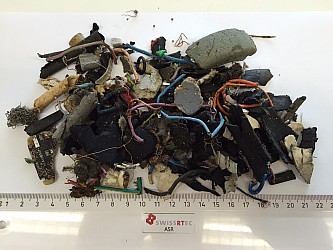 recycling companies and machine builders before building up a business case for recovering NF-metals from ASR. This comprehensive study showed that the swissRTec process was the way to go for fine copper recovery due to the balling and liberation effect of metals within the delamination mill.
recycling companies and machine builders before building up a business case for recovering NF-metals from ASR. This comprehensive study showed that the swissRTec process was the way to go for fine copper recovery due to the balling and liberation effect of metals within the delamination mill.
Mario Zoellig, swissRTec¹s managing director, states that the SRT2 system in Tiel adds to a growing number of references in the ASR field. "We see the ASR sector as active and growing at a time where many recyclers face difficult times due to declining commodity prices. Recovering the metals within ASR to a level where they can be sold to European refineries and smelters is a further step in the direction of a true circular economy and allows customers to derive maximum value from their material," he says.
The delamination mill is at the centre of the swissRTec process and works on the principle of impact milling where materials are exposed to many collisions with the rotor, stator and other objects. Composite material, such as cable, comprises of PVC and metal together as one object. Metals become liberated and ball shaped after exiting the delamination mill and subsequent steps of screening and density separation produce clean metal fractions which can be sold directly to smelters or refiners.
 The CCM20RT is based around the same design as its predecessors, the CCM10 and CCM15 RT; however, with a 2-meter rotor diameter and 630kW max power rating it makes a big step forward in power and size. With the development of the CCM20RT machine, swissRTec is able to deliver a high throughput plant with a high quality output to match.
The CCM20RT is based around the same design as its predecessors, the CCM10 and CCM15 RT; however, with a 2-meter rotor diameter and 630kW max power rating it makes a big step forward in power and size. With the development of the CCM20RT machine, swissRTec is able to deliver a high throughput plant with a high quality output to match.
The swissRTec process was delivered in July 2015. According to Allard Verburg, ARN manager of business development, "During commissioning it was already clear that a plant capacity of 2.5 ton/h was within grasp using the CCM20RT delamination mill. The capacity is really key because ARN operates a continuous process for ASR processing and the process is only as effective as it weakest link."
After delamination, the material is screened in five size classes for further treatment at the density tables. The density tables are separating a heavy NF-metal mix and a light organic plastic mix. Loss of metals within the reject plastic fraction is below 2% and can be further processed for higher recovery. The NF-metal mix is further separated on the offline unit where heavy metals such as copper and brass can be separated from lighter aluminium. A magnetic fraction is also separated. "The experience of ARN is that the fine particle sizes, below 1.5 mm, gives the highest copper grades. A copper grade of 95% plus had been achieved and analysed by the copper smelter."
Verburg adds, "The remaining plastic mix fractions should find a market as well. ŒThis is the next challenge in optimising this process. If we find a customer for these materials, we can even further improve the ELV recycling achievements."
Register Today for ISRI2016 - The Recycling Event of the Year
Registration is now open for ISRI’s (Institute of Scrap Recycling Industries) Annual Convention and Exposition, being held in Las Vegas, April 2-7. As the world’s largest gathering of recyclers, ISRI2016 is set to provide attendees with first-class educational and networking opportunities, product showcases, and industry news needed to maximize their time, dollars, and return on investment. Don’t miss out on this opportunity!
Workshops this year will focus on the aspects of business needed to know to keep the doors open in challenging times. Some of those workshops include:
- Using the Tax Code to Your Advantage in a Down Market;
- How To Work With Your Banker In Tough Economic Times;
- The Current State of DRI in the U.S. Ferrous Market;
- The Increased Use of Aluminum in the Automotive Industry; and
- How to Make Money in Plastics Recycling.
In addition to these and other informative workshops, ISRI2016 will feature the widely popular Spotlight series, including: Ferrous Spotlight, Copper Spotlight, Aluminum Spotlight, Nickel/Stainless Spotlight, Paper Spotlight, and Tire Spotlight.
Network with others in the scrap recycling industry; Gain insights on how to maximize potential sales and find new markets; and have the chance to reconnect with colleagues in the industry.
For more information, including registration and hotel details, visit www.isriconvention.org. Check back regularly for updates. Register to receive the early-bird rate before January 15, 2016.


